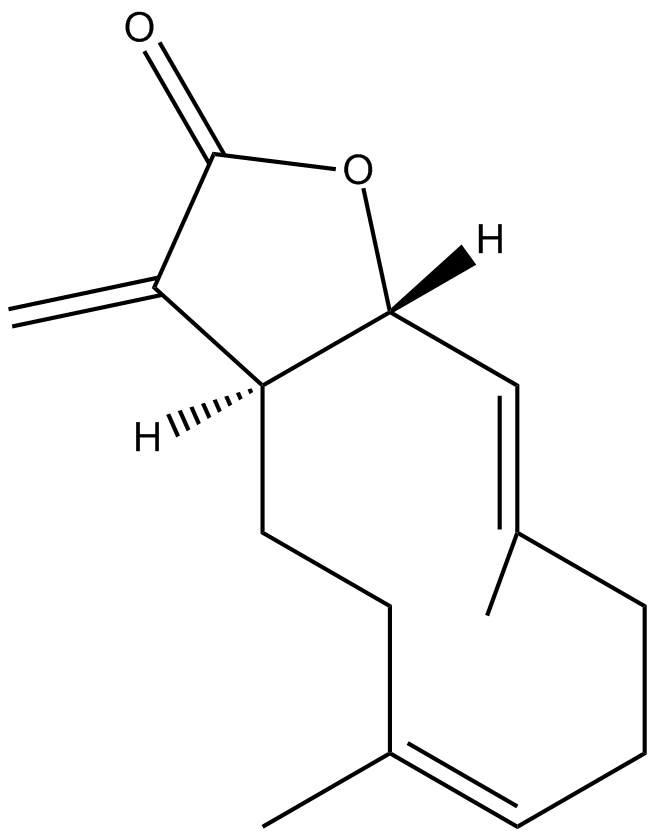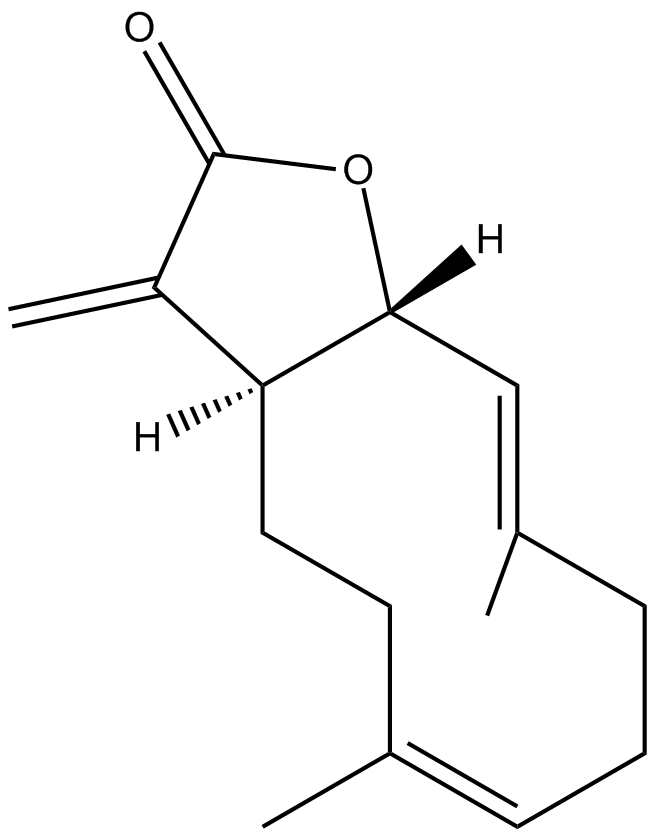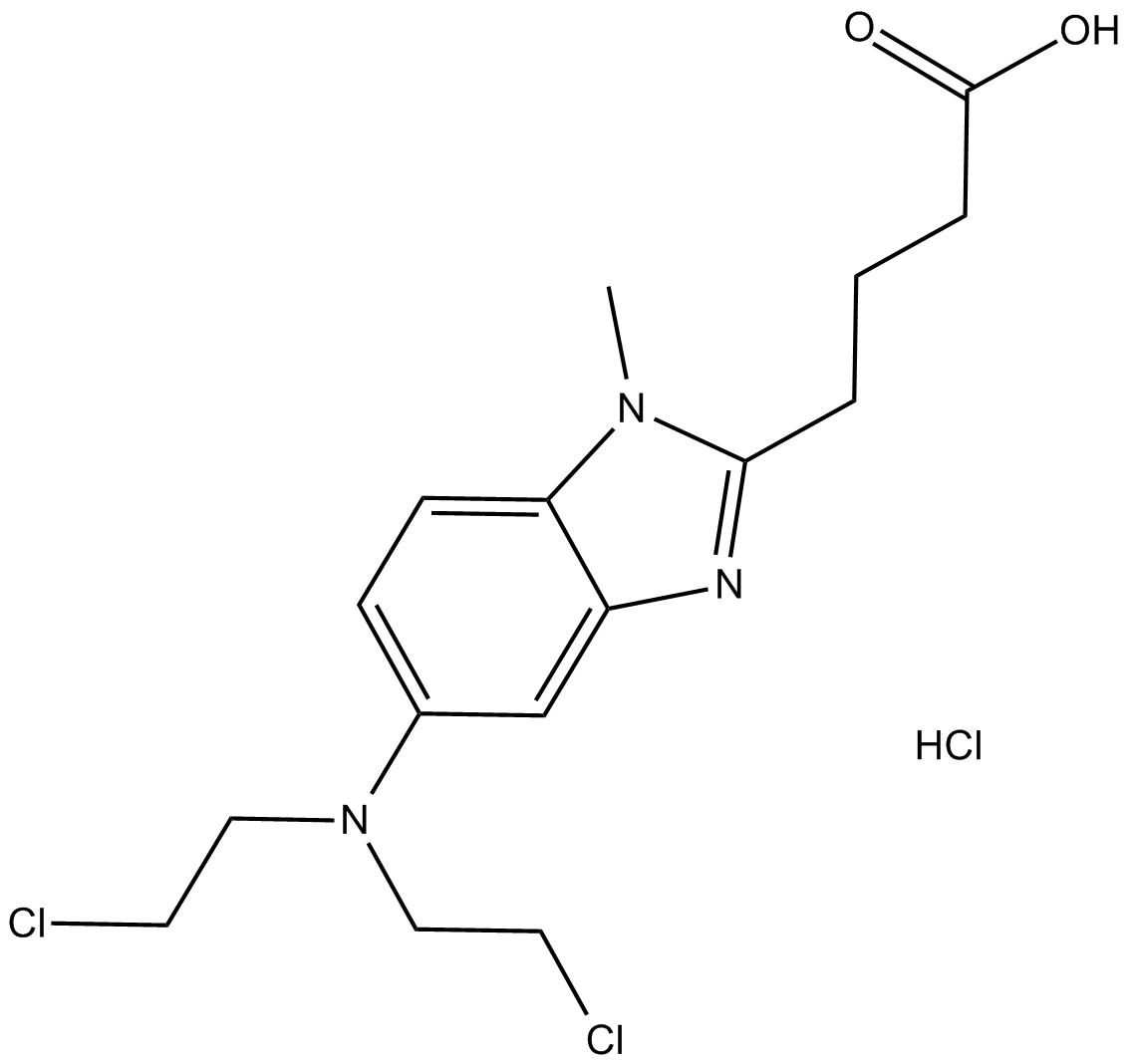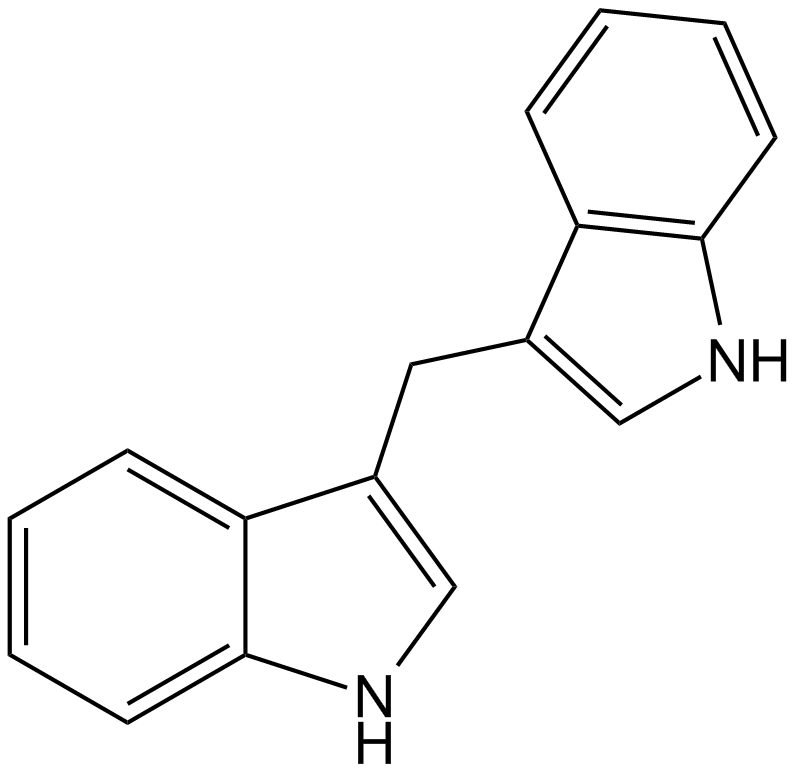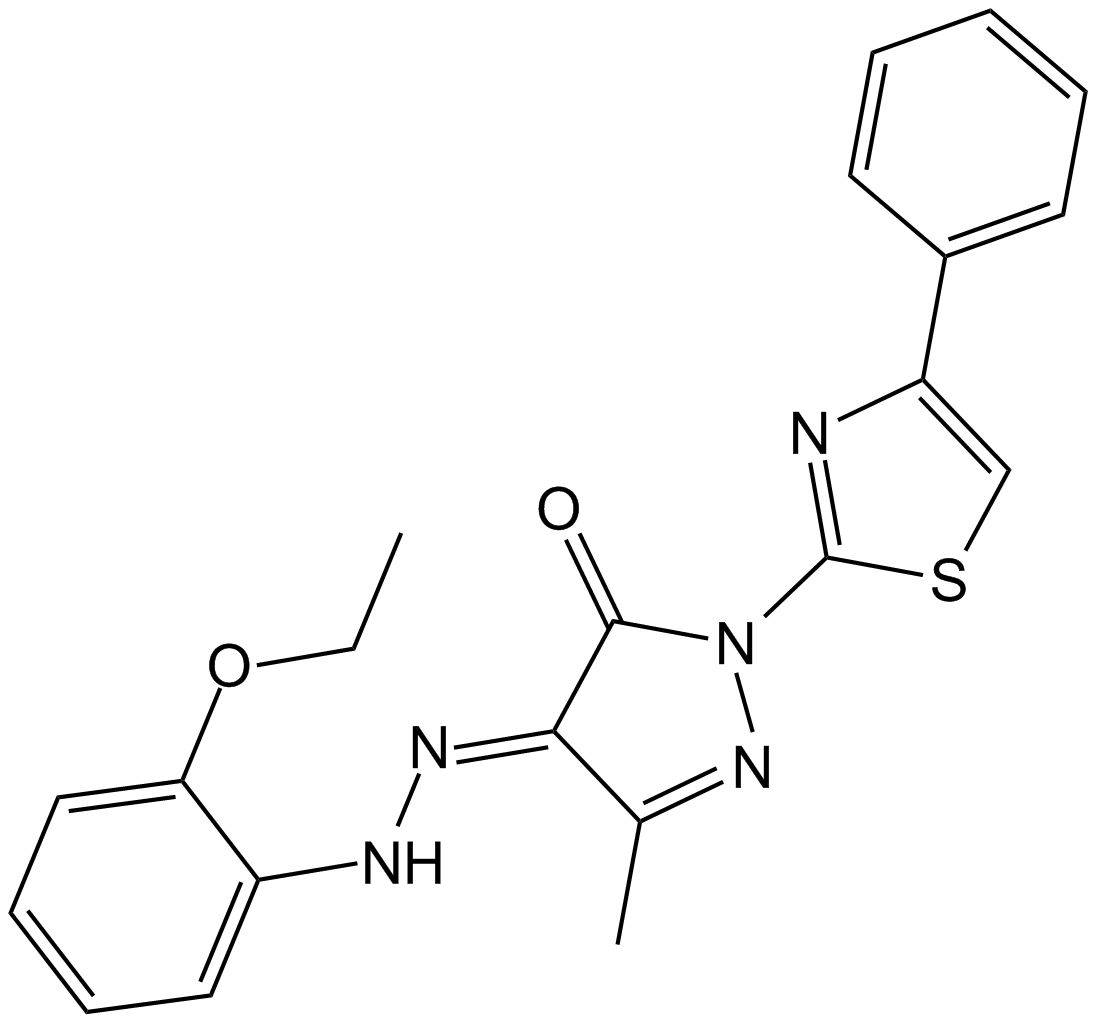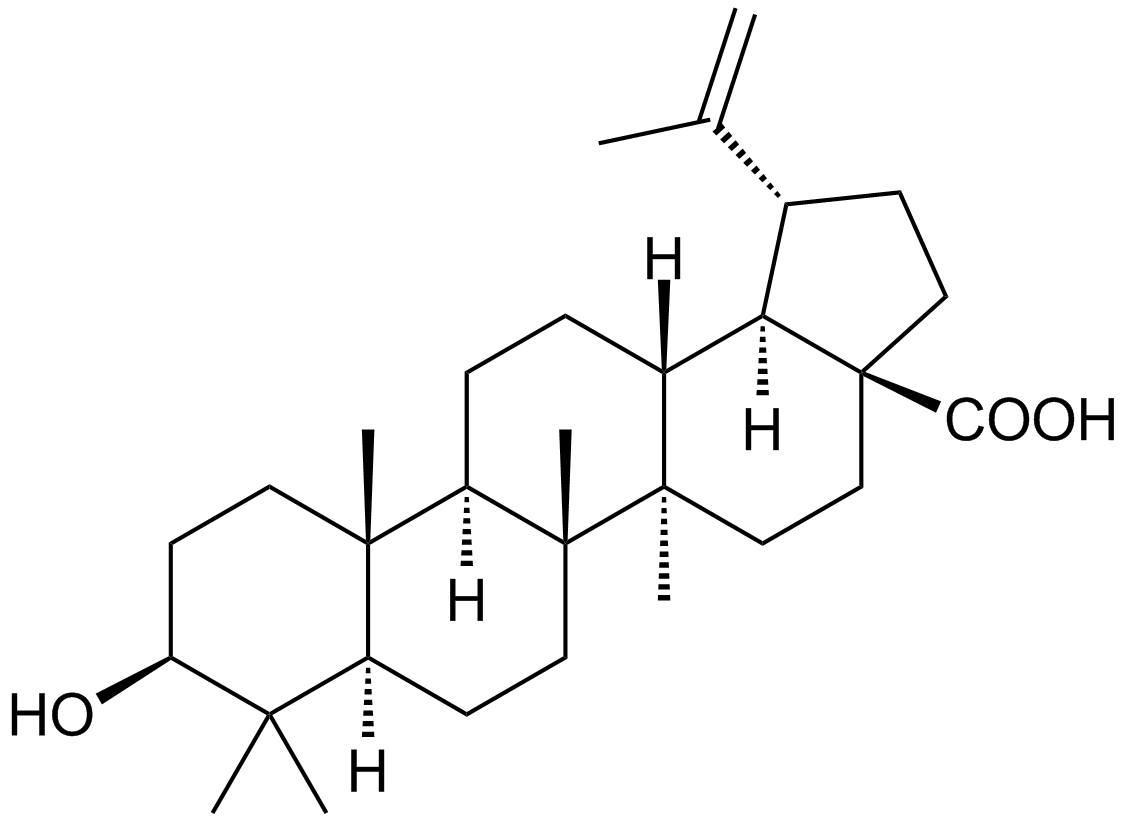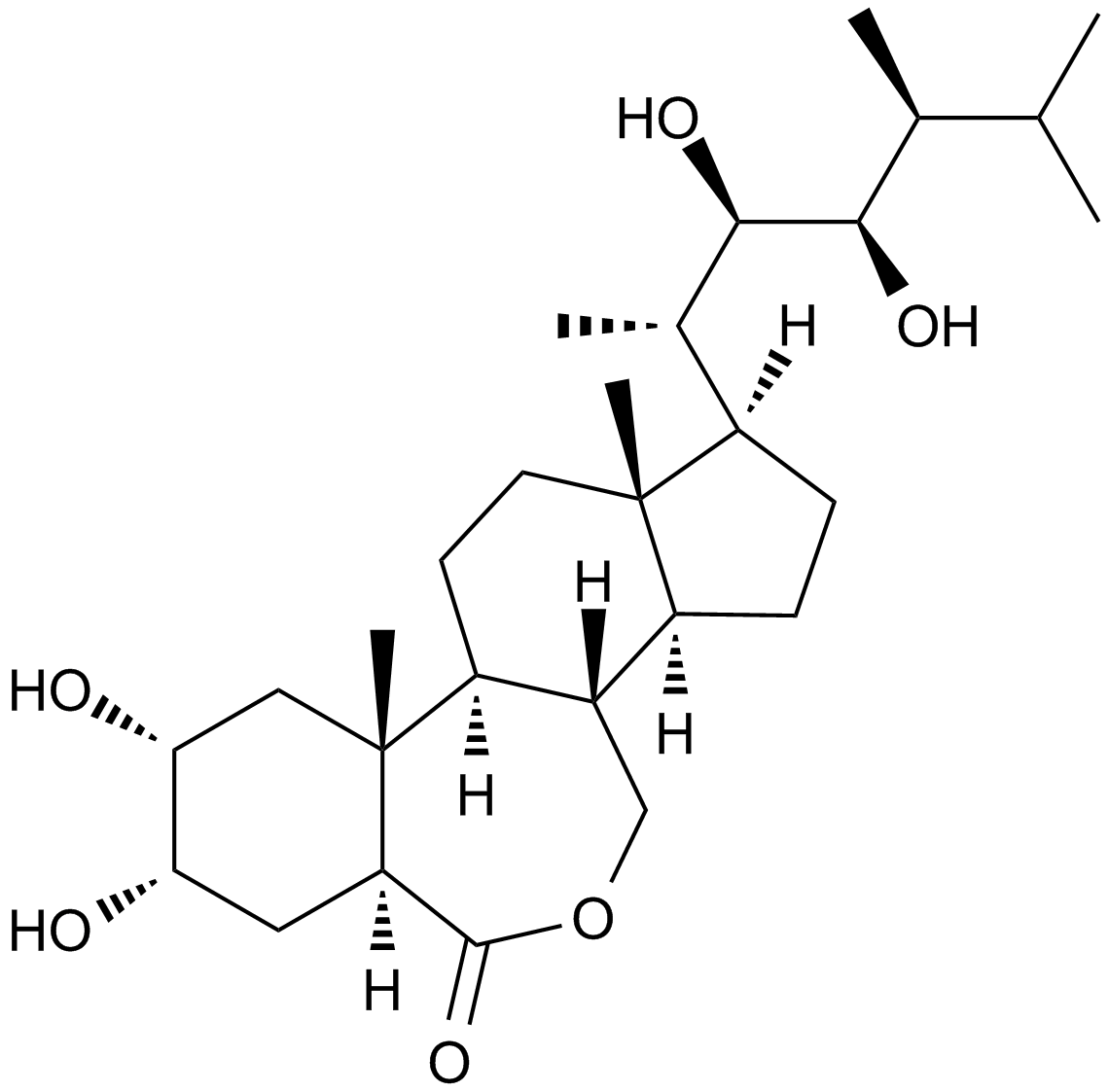Costunolide
Catalog No.
A3327
Apoptosis inducer
Featured Products
Description:
IC50 Value: 6.2 - 9.8 μg/mL(sarcoma cells viability)[3]
Costunolide, a sesquiterpene lactone, exhibits anti-inflammatory and anti-oxidant properties and mediates apoptosis.
in vitro: Costunolide significantly inhibited RANKL-induced BMM differentiation into osteoclasts in a dose-dependent manner without affecting cytotoxicity. Costunolide did not regulate the early signaling pathways of RANKL, including the mitogen-activated protein kinase and NF-κB pathways. However, costunolide suppressed nuclear factor of activated T-cells, cytoplasmic 1 (NFATc1) expression via inhibition of c-Fos transcriptional activity without affecting RANKL-induced c-Fos expression. The inhibitory effects ofcostunolide were rescued by overexpression of constitutively active (CA)-NFATc1 [1]. Exposure of T24 cells to costunolide was also associated with increased expression of Bax, down-regulation of Bcl-2, survivin and significant activation of caspase-3, and its downstream target PARP [2]. Both costunolide and dehydrocostus lactone inhibited cell viability dose- and time-dependently. IC50 values ranged from 6.2 μg/mL to 9.8 μg/mL. Cells treated with costunolide showed no changes in cell cycle, little in caspase 3/7 activity, and low levels of cleaved caspase-3 after 24 and 48 h [3].
in vivo: Neither costunolide nor alpha-MGBL affected the blood-ethanol elevation in pylorus-ligated rats or that induced by intraperitoneal and intraduodenal ethanol administration [4]. Costunolide and alpha-MGBL suppressed gastric emptying in rats given 20% ethanol and 1% sodium carboxymethyl cellulose.
Clinical trial: N/A
| Physical Appearance | A solid |
| Storage | Store at -20°C |
| M.Wt | 232.32 |
| Cas No. | 553-21-9 |
| Formula | C15H20O2 |
| Synonyms | (+)-Costunolide;Costunolid;Costus lactone;NSC 106404 |
| Solubility | ≥35.71 mg/mL in DMSO; insoluble in H2O; ≥45.2 mg/mL in EtOH with gentle warming and ultrasonic |
| Chemical Name | (3aS,6E,10E,11aR)-6,10-dimethyl-3-methylidene-3a,4,5,8,9,11a-hexahydrocyclodeca[b]furan-2-one |
| SDF | Download SDF |
| Canonical SMILES | C/C(\CC[C@H]1C2=C)=C\CC/C(\C)=C/[C@H]1OC2=O |
| Shipping Condition | Small Molecules with Blue Ice, Modified Nucleotides with Dry Ice. |
| General tips | We do not recommend long-term storage for the solution, please use it up soon. |
Quality Control & MSDS
- View current batch:
Chemical structure
